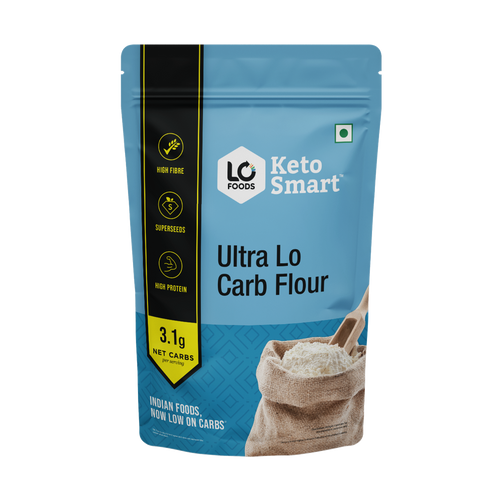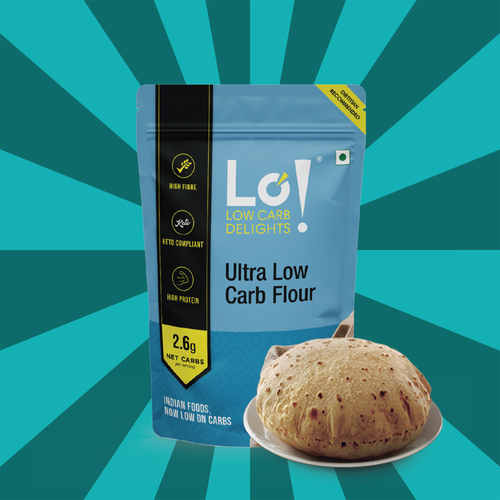
How to Balance Protein with Carbs and Fats in a Well-Rounded Diet
A healthy diet is more than just calories and macros—it's about balance, variety, and understanding how nutrients work together to fuel your body. Protein, carbohydrates, and fats are the three primary macronutrients, each playing a unique role in physical health, energy levels, and overall function. While protein often takes the spotlight for muscle growth and satiety, the importance of balancing it with the right types of carbohydrates and fats is just as essential.
An unbalanced macronutrient intake—whether too low in protein, too high in carbs, or overly restrictive with fats—can disrupt energy, hormone function, and even mental clarity. Learning how to strike the right balance is key to a diet that supports long-term wellness.

Common Causes of Macronutrient Imbalance
Many people unknowingly eat in a way that heavily favors one macronutrient. A typical modern diet tends to be overloaded with refined carbohydrates and unhealthy fats, with insufficient protein. Skipping breakfast, consuming packaged snacks, and relying on quick-fix meals often leads to a lack of nutrient diversity.
Other times, fad diets that demonize certain macros—like low-fat or ultra-low-carb regimens—can backfire when followed without guidance. Inadequate fat intake may affect hormone production, while low-carb diets without enough fiber or protein can lead to fatigue, cravings, and poor digestion.
Busy lifestyles, lack of meal planning, and misinformation about nutrition often contribute to these imbalances, leaving the body undernourished even when calorie intake is high.
Symptoms of a Poorly Balanced Diet
Imbalances in macronutrients can produce a wide range of physical and mental symptoms. These signs may develop gradually and are sometimes misattributed to other causes.
Common symptoms include:
-
Constant hunger or frequent cravings, especially for sugar
-
Afternoon fatigue and sluggishness
-
Mood swings or irritability
-
Brain fog or difficulty concentrating
-
Unexplained weight gain or muscle loss
-
Digestive discomfort such as bloating or constipation
-
Dry skin, brittle hair, or hormonal irregularities
These symptoms often indicate that your body isn’t getting the right mix of fuel to function efficiently. They can usually be improved with simple dietary adjustments.
Understanding the Roles of Each Macronutrient
Each macronutrient has its own set of functions, and none should be completely eliminated unless medically necessary.
-
Protein helps build and repair tissues, supports enzyme and hormone production, and promotes satiety. It is also key for maintaining lean body mass and muscle during weight loss.
-
Carbohydrates are the body’s preferred source of quick energy, especially for the brain and muscles during exercise. Whole grains, fruits, legumes, and vegetables provide complex carbs along with fiber and essential nutrients.
-
Fats are critical for hormone production, brain function, cell structure, and vitamin absorption. Healthy sources include nuts, seeds, avocados, olive oil, and fatty fish.
Balancing these three ensures steady energy, metabolic flexibility, and better appetite control.
Ideal Macronutrient Distribution for Most Adults
While individual needs vary, a general guideline for balanced macronutrient intake is as follows:
|
Macronutrient |
Recommended Range (% of daily calories) |
Key Sources |
|---|---|---|
|
Protein |
20–30% |
Eggs, lentils, paneer, fish, yogurt |
|
Carbohydrates |
40–50% |
Whole grains, fruits, vegetables, legumes |
|
Fats |
20–30% |
Nuts, seeds, olive oil, ghee, fatty fish |
This range provides flexibility based on activity level, fitness goals, and personal health needs. Athletes and those in strength training may need more protein, while highly active individuals may require more carbs for fuel.
Smart Food Combinations for Balanced Meals
Combining the right foods ensures each meal contains a good mix of all macronutrients. A well-rounded plate improves digestion, stabilizes blood sugar, and prevents energy crashes.
Some practical combinations include:
-
Breakfast: Scrambled eggs (protein + fat) with whole grain toast (carbs) and avocado slices (healthy fat)
-
Lunch: Grilled chicken (protein) with quinoa (carbs + some protein) and roasted vegetables (fiber + nutrients + fat from olive oil)
-
Dinner: Paneer tikka (protein + fat) with stir-fried vegetables and a small portion of brown rice (carbs)
-
Snack: Greek yogurt (protein) with almonds (fat) and berries (carbs + antioxidants)
Balanced meals don't need to be complex or time-consuming. The key is making sure no macronutrient is missing from the plate.
How to Adjust Macros Based on Goals
Your optimal macronutrient ratio may vary depending on your personal goals:
-
Weight Loss: Increase protein intake (25–35%) to preserve muscle mass and improve satiety, reduce refined carbs, and keep fats moderate.
-
Muscle Gain: Prioritize protein (30%) and carbs (45–50%) to fuel workouts and support recovery.
-
Blood Sugar Control: Focus on fiber-rich carbs, increase protein (30%) to slow digestion, and include healthy fats for better glucose management.
-
General Wellness: Aim for a balanced ratio across all three macros with whole, unprocessed foods forming the bulk of the diet.
Listening to your body’s feedback is essential. If you feel sluggish or hungry soon after eating, it may be time to adjust your ratios.

Signs You’ve Achieved Macronutrient Balance
A well-balanced diet helps your body feel more energized, focused, and satisfied. Signs of a healthy macronutrient balance include:
-
Sustained energy throughout the day
-
Stable mood and mental clarity
-
Reduced cravings and better portion control
-
Improved digestion and regularity
-
Enhanced workout performance and recovery
-
Gradual, healthy weight changes depending on goals
Small daily habits—like choosing high-protein snacks or pairing carbs with fats—can support long-term consistency and health benefits.
Summary
Balancing protein with carbohydrates and fats is the foundation of a well-rounded diet. Each macronutrient plays a vital role in supporting energy, hormone balance, appetite control, and overall well-being. Avoiding extremes and focusing on nutrient-dense, whole foods is key to achieving a sustainable, flexible, and enjoyable eating pattern.
With convenient high-protein, low-carb food options available through Lofoods, building balanced meals and snacks has never been easier—whether you're at home, at work, or on the move.
This Blog post is an initiative by Lo! Foods, to provide accurate and Nutritionist / Doctor approved information related to Health. Lo! Foods is India's leading brand for Everyday Functional Foods. Foods designed for specific Health conditions or Needs. Lo! Foods also runs India's largest range of Low Carb Healthy Cloud Kitchens, under the brand names of Lo!, ProteinChef, ATH (All Things Healthy) and DiabeSmart.















Leave a comment
Your email address will not be published.